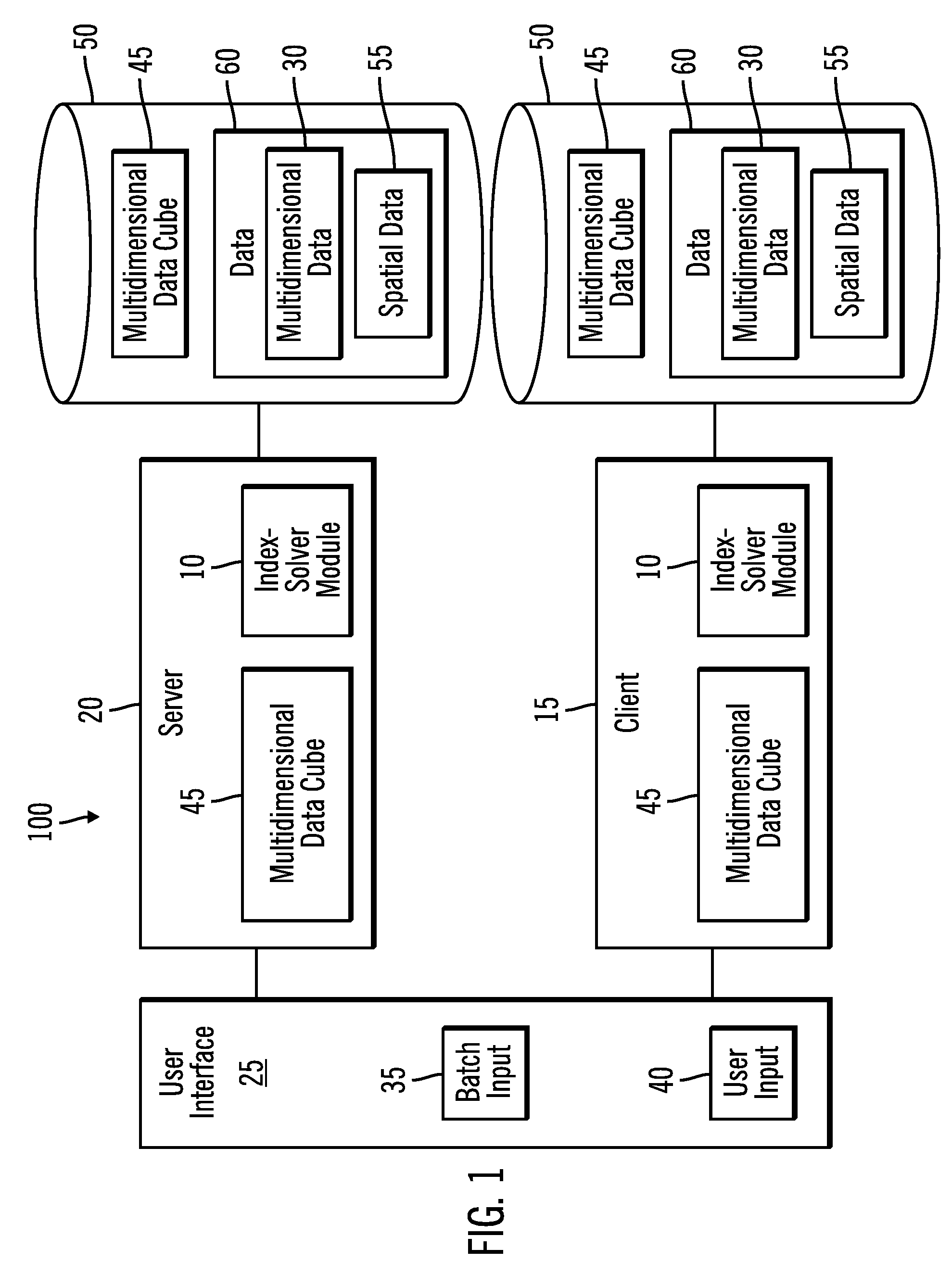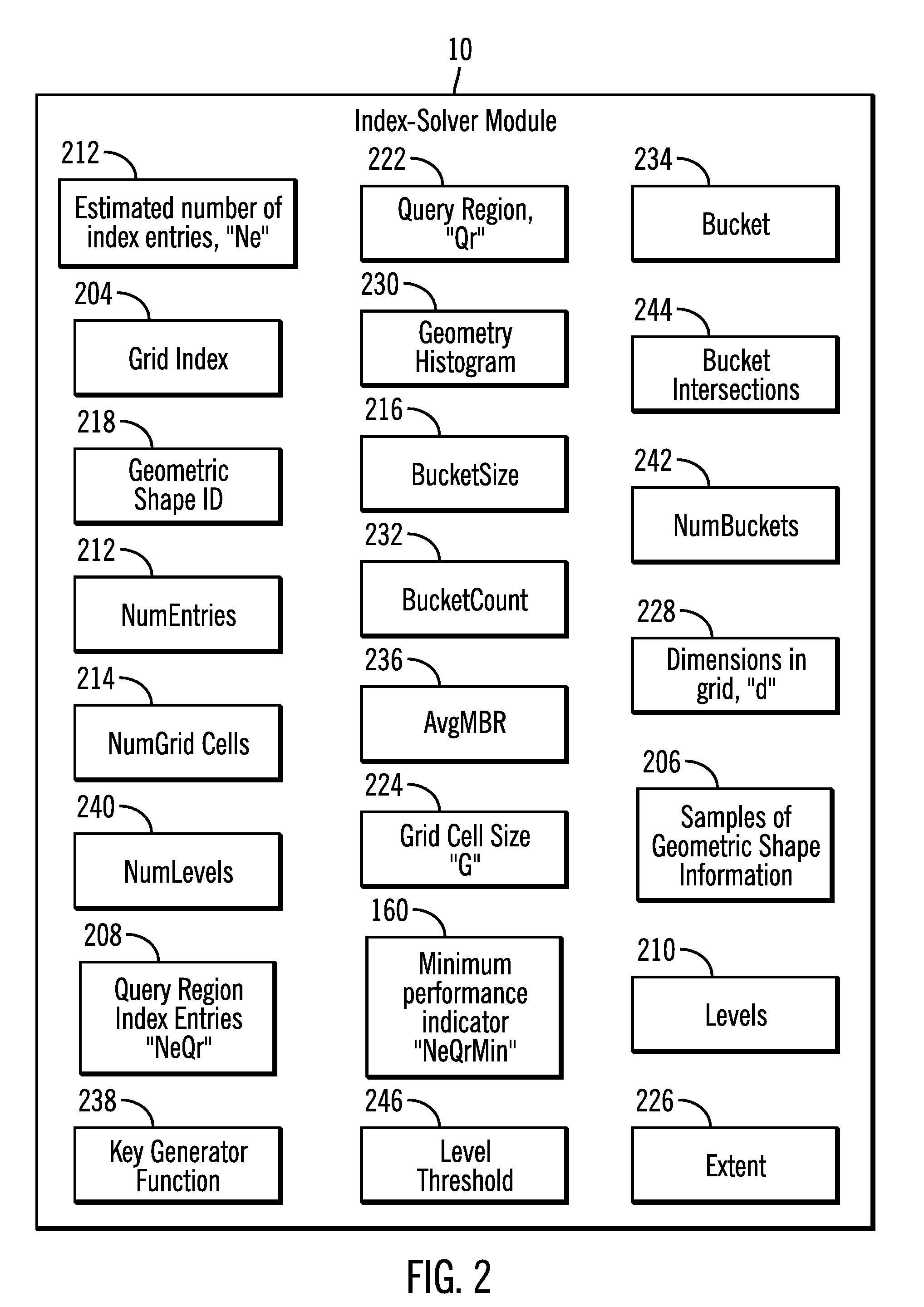Method for determining an optimal grid index specification for multidimensional data
a multi-dimensional data and optimal grid index technology, applied in multi-dimensional databases, instruments, navigation instruments, etc., can solve the problems of reducing the computational processing required to perform sampling, affecting the accuracy of spatial data, so as to facilitate the location of geometric shapes, improve the technique, and minimize processing
- Summary
- Abstract
- Description
- Claims
- Application Information
AI Technical Summary
Benefits of technology
Problems solved by technology
Method used
Image
Examples
Embodiment Construction
[0038]FIG. 1 illustrates an exemplary high-level architecture of a computer system 100 comprising a system and method for determining an optimal grid index specification for multidimensional data (the “system 10” or system 10 for index-solver module 10). System 10 includes a software programming code or computer program product that is typically embedded within, or installed on a computer. Alternatively, system 10 can be saved on a suitable storage medium such as a diskette, a CD, a hard drive, or like devices.
[0039]As shown in FIG. 1 and in the computer system 100, system 10 may operate in a client-server computer system configuration. Therefore, a client computer system (client 15) may communicate with a server computer system (server 20) during the operation of system 10. System 10 operates in either the client 15 or the server 20. For example, information may be communicated to either the server 20 or the client 15 via a user interface 25 and may subsequently be used by system 1...
PUM
 Login to View More
Login to View More Abstract
Description
Claims
Application Information
 Login to View More
Login to View More - R&D
- Intellectual Property
- Life Sciences
- Materials
- Tech Scout
- Unparalleled Data Quality
- Higher Quality Content
- 60% Fewer Hallucinations
Browse by: Latest US Patents, China's latest patents, Technical Efficacy Thesaurus, Application Domain, Technology Topic, Popular Technical Reports.
© 2025 PatSnap. All rights reserved.Legal|Privacy policy|Modern Slavery Act Transparency Statement|Sitemap|About US| Contact US: help@patsnap.com



